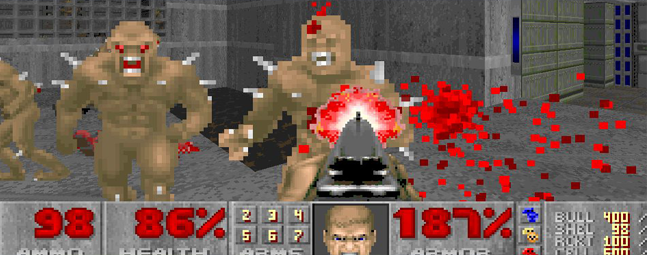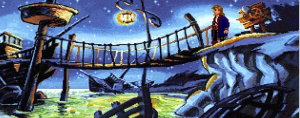I’m currently reading Kathleen Fitzpatrick’s Planned Obsolescence and in the introduction she makes the point that digital forms of writing could be more prone to obsolescence than print:
Consider, for instance, the obsolescence one encounters in attempting to read classic hypertext fiction such as Michael Joyce’s Afternoon on a Mac these days: Apple fully retired its support for “Classic” mode with the advent, on the hardware side, of Intel-based processors that can’t boot into OS 9, and on the software side, the release of OS 10.5, which eliminated Classic support for PowerPC machines as well (Fitzpatrick, 6).
She makes some really good points here, and I like that she emphasizes the Mac, because I really do think Macs are the choice of your typical humanities guy or gal. I’m a Mac guy as a rule; This is not because I have some religious appreciation for Steve Jobs, really it all has to do with my love of the OS X interface. It’s clean, it’s pretty, and is at root the same OS that it was when I started using it in 2002. It is true, that if you are pulling all of your mac software from the App Store, you are going to have a pretty hard time running old software, but if you are downloading from the web, there are plenty of ways to pull in some beautiful, intuitive, easy to use emulators. Here are some of my favorites:

This is a DOS emulator, for all of you out there that miss typing out your colons and backslashes. DOS was always my favorite, as a child when all my other friends were upgrading their Nintendos to Super Nintendos my parents scoffed at the idea of buying a video game machine that wouldn’t play the old games they had spent hard earned money for, so being the precocious little brat I was, I convinced them I needed a 486SX Packard Bell. Sure it had Windows, but all my favorite games were in DOS. This emulator is a time machine to my lonely, overweight childhood. Space Quest anyone? Anyone?

Ok, so remember in that last paragraph where I said I wasn’t allowed a Super Nintendo. Yeah, well, I’m still kind of bitter about that, but I got over it by the time I hit college and downloaded (probably illegally) my first Super Nintendo emulator. Mario is definitely more fun in 256 colors.

This project is sort of an artisans version of DOSBOX. All super-nerds from the 80s knew that computer games in the early 90s were like soft drinks. You had your Coca-Cola classic and you had your Wal-Mart brand Sam’s Colas. While DOSBOX and derivitives like BOXER attempt to emulate any file that could run on DOS (sometimes successfully, sometimes less so), ScummVM focuses on perfecting the emulation of the Citizen Kanes of Adventure Gaming, the point-and-click-I have an invntory of crap-type of game. If you ever want to see the kind of game where the gameplay itself takes a hard back seat to narrative, download ScummVM and seek out the games that it can emulate.

And because I have no memory of a life without this first computer in my home, I’ve included a very groovy emulator for Apple ][ files.
So as you can probably see, all the emulator selections I chose are suited to my tastes, and they’re all compatible with my favorite operating system, OS X. If you have a Windows or Linux PC your choices of emulators are probably even more extreme than mine. You could probably emulate your childhood graphing calculator if you wanted to.
The issue I’ve had with emulators is not starting them up, but running certain types of programs that have a productivity component to them. My big example is a program that basically ruled my time during middle school: Autodesk Animator Pro. Yes, it was made by the same people who make such products as Sketchbook and Maya now, but back then it was a much simpler interface, that I’d do anything to run now. I mean, look at the animations that people were able to make with that thing: http://www.youtube.com/watch?v=HTl-pPlaD7Q
I’m sure a more hard nosed techie could push me out of my computer chair, type a few things onto my machine, and could run the programs, and I’m sure there are some open source players that could run anything I created on the program. That said, at least in terms of use by a layman, old software that is used to create a deliverable is often a challenge to operate. If this is a challenge to operate, how can we expect to move back to earlier forms of narrative creation that were not fully explored?
I would argue that we can look at retro design techniques, study constraints that operators often worked under and compare those to ways we have of breaking those restraints, and making the decision to hold ourselves to them or break through. I plan on this thought process to be a core concept as I move forward with my academic study in Digital Narratives.











